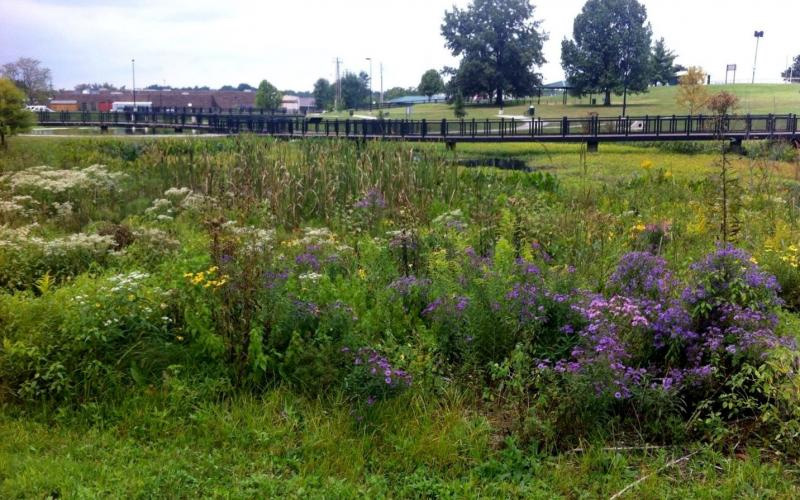 Can wildlife habitat be successfully reintegrated into urban environments? The Gainesway Pond Water Quality and Environmental Education Project, at the end of Appian Way in Lexington, shows the answer is a resounding, “YES!” Klausing Group has been working with Susan Plueger and the Lexington Division of Water Quality for several years to restore the natural areas around the pond at Gainesway Park.
Can wildlife habitat be successfully reintegrated into urban environments? The Gainesway Pond Water Quality and Environmental Education Project, at the end of Appian Way in Lexington, shows the answer is a resounding, “YES!” Klausing Group has been working with Susan Plueger and the Lexington Division of Water Quality for several years to restore the natural areas around the pond at Gainesway Park.
The two ponds and natural buffer zones cover nearly 3 acres, and their primary function is to help collect rainwater runoff and filter out pollutants and contaminants thereby improving water quality for the community. To increase the project’s ecosystem services, the areas were planted with a variety of native plants adapted to living near ponds or even in the water.
Klausing Group has assisted in developing long term strategies to manage invasive species without the use of chemicals, while also encouraging the spread of native plants. The solution is simple, but the execution takes a trained eye. Many of the invasive species are annuals or biennials, which means if we can stop them from producing seeds their populations will decline dramatically in only a few years. String trimmers keep the short-lived invasive plants from flowering, while longer lived invasive plants are manually removed. Klausing Group’s Senior Horticulturist has trained a specialty crew to be able to identify between which plants are invasive and which are desired native plants. The plan has worked very well, with one section reduced from nearly 90% Poison Hemlock to less than 5% coverage in only two years. Most of the native plants are long lived perennials. This means they will spread their seeds to eventually crowd out and overpower the diminishing populations of invasive species to create pure stands of native plants.
Although there is more work to be done, the early results are encouraging. The native plant buffer zone also creates a beautiful landscape attractive to both humans and wildlife. Flowers appear throughout the season, native grasses sway in the breeze, and trees provide pockets of shade. Beneficial insects, like butterflies and bees, visit the flowers. Fish, turtles, ducks, and frogs make the pond their homes. And many song birds live among the tree canopies eating the plentiful native plant seeds and insects.
Many people believe that native plant landscapes require no care, which is incorrect. These landscapes do require maintenance, although far less when compared to traditional landscapes. A once per month visit to do a little weeding, and a final mow-to-the-ground in spring is all that’s needed. The plants provide their own pest control and their own mulch. Effective green infrastructure results in less maintenance, more flowers, more butterflies, more birds…what’s not to love?


